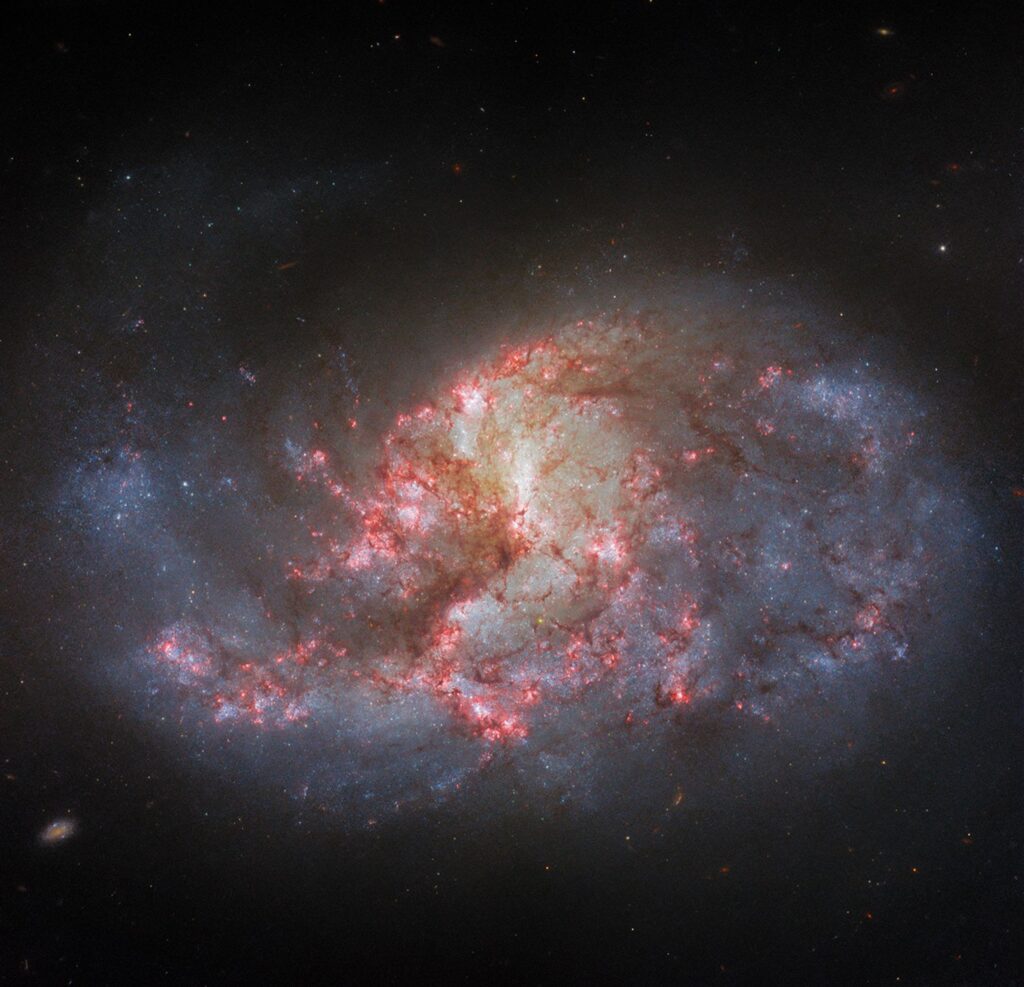A new cosmic atlas contains precise details of nearly 400,000 galaxies in the Milky Way’s general neighborhood. And, beyond being of immense use for astronomers seeking hard data, the atlas also features beautiful images that are free for the public to access online and get to know our corner of the universe.
Called the Siena Galaxy Atlas (SGA), this digital atlas was created using data from three astronomical surveys collected between 2014 and 2017 at Cerro Tololo Inter-American Observatory (CTIO) and Kitt Peak National Observatory (KPNO). Together, those surveys are known as the DESI Legacy Surveys.
Cosmic atlases of this type help astronomers spot patterns that help categorize new discoveries, such as stars that suddenly flare and then disappear — so-called “transients.” Plus, such atlases allow astronomers to identify which objects are contenders for detailed follow-up investigations. These databases must also be constantly updated to keep up with those discoveries, especially in the modern age when telescope technologies continue to rapidly improve.
That’s where the SGA’s merit comes in. This atlas represents peak accuracy, promising to be a gold mine of galactic information for scientists aiming to investigate everything from the births and evolutions of galaxies to the distribution of dark matter and propagation of gravitational waves through space.
“Nearby large galaxies are important because we can study them in more detail than any other galaxies in the universe; they are our cosmic neighbors,” John Moustakas, SGA project leader and a physics professor at Siena College, said in a statement. “Not only are they strikingly beautiful, but they also hold the key to understanding how galaxies form and evolve, including our very own Milky Way galaxy.”
Related: James Webb Space Telescope detects quartz crystals in an exoplanet’s atmosphere

Standing on the shoulders of giants
Mapping the night sky is a practice that dates back centuries, with other notable cosmic atlases being the 1774 Catalogue des Nébuleuses et des Amas d’Étoiles (Catalogue of Nebulae and Star Clusters) created by French astronomer Charles Messier, the New General Catalogue of Nebulae and Clusters of Stars (NGC), devised by John Louis Emil Dreyer in 1888 and, more recently, 1991’s Third Reference Catalogue of Bright Galaxies, in which galaxies still bear the prefixes Messier (M) and NGC in their names, indicating they originally belonged to previous catalogs..
The SGA stands on the shoulders of this astronomical legacy — but, whereas historic atlases have relied on antiquated equipment and photographic plates, the surveys that informed the SGA depended on state-of-the-art digital images captured by technology. For instance, this atlas was created with information from the Dark Energy Camera (DECam) on the Víctor M. Blanco 4-meter Telescope in Chile, the Mosaic3 camera on the Nicholas U. Mayall 4-meter Telescope and the 90Prime camera on the Bok 2.3-meter Telescope. Additional data was provided to the atlas by NASA’s Wide-field Infrared Survey Explorer (WISE) satellite.
All together, these surveys cover an area amounting to 20,000 square degrees, which is equivalent to almost half of the night sky over Earth. This means the SGA comprises an absolutely huge amount of cosmic information in one place, including the locations, shapes and sizes of hundreds of thousands of large galaxies relatively close to the Milky Way.
What really sets SGA apart is the accuracy of all that data, thanks to being built on images captured with highly sensitive instruments. SGA is also the first cosmic atlas to feature the light profiles of galaxies — a curve that describes how the brightness of the galaxy changes from its brightest point, usually at the center, to its dimmest, commonly at its edge.
“Previous galaxy compilations have been plagued by incorrect positions, sizes, and shapes of galaxies and also contained entries that were not galaxies but stars or artifacts,” Arjun Dey, a project scientist and astronomer at the NOIRLab, said in the statement..”The SGA cleans all this up for a large part of the sky. It also provides the best brightness measurements for galaxies, something we have not reliably had before for a sample of this size.

Related Stories:
“The SGA is going to be the pre-eminent digital galaxy atlas for large galaxies.”
Some specific projects astronomers could undertake with SGA data include investigations into how stars form in differently shaped galaxies and how the distribution of dark matter — a mysterious form of matter that dominates our universe but remains effectively invisible — determines the positions of galaxies and how they cluster. The SGA could also help astronomers find the sources of gravitational wave signals detected on Earth because these faint ripples in the very fabric of space and time wash over our planet after traveling for millions of light years.
“The public release of these spectacular data contained in the atlas will have a real impact not only on astronomical research but also on the public’s ability to view and identify relatively nearby galaxies,” NOIRLab Project director Chris Davis said. “Dedicated amateur astronomers will particularly love this as a go-to resource for learning more about some of the celestial targets they observe.”


